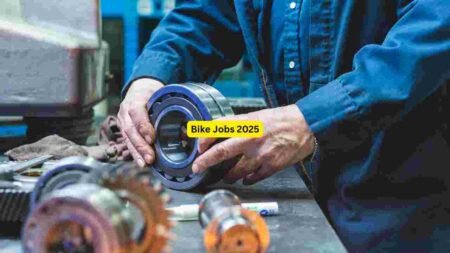Every student dreams of owning a personal laptop for online learning, digital exams, and skill development. The Government Free Laptop Scheme 2025 has brought that dream within reach.
Under the Digital India Mission and Education Empowerment Programs, both the Central and various State Governments have announced free or subsidized laptop distributions for deserving students across India.
This year’s initiative will cover school and college students, especially those from low-income families, rural areas, and minority communities. The estimated cost per laptop is around ₹35,000 to ₹40,000, and over 50 lakh students are expected to benefit across India.
Objective of the Free Laptop Scheme 2025
The Government aims to make every student digitally literate and capable of participating in India’s growing online education system. The laptop scheme’s core goals are:
- Promote digital education and reduce the technology gap.
- Support students in rural and semi-urban areas for online learning.
- Encourage youth participation in Digital India, AI learning, and Skill India programs.
- Help poor and meritorious students continue education without interruption.
Through this initiative, the government hopes to transform traditional classrooms into smart learning environments.
Key Highlights of Government Laptop Scheme 2025
| Feature | Details |
|---|---|
| Scheme Name | Free Laptop Distribution 2025 |
| Launched By | Central & State Governments |
| Target Group | Students (10th, 12th, College, Technical Courses) |
| Device Type | Laptop / Notebook |
| Price Range | ₹35,000 – ₹40,000 per unit |
| Total Beneficiaries | 50 lakh + students |
| Mode of Application | Online registration |
| Category | Educational Welfare |
| Status | Active in multiple states |
Who Can Apply
To ensure fairness, the scheme focuses on deserving and meritorious students. The eligibility criteria may vary by state, but the general rules are:
- The student must be an Indian citizen.
- Studying in government or government-aided institutions.
- Should have scored at least 75% marks in the previous class (relaxation for SC/ST/OBC).
- Family annual income should not exceed ₹2.5 lakh.
- Priority given to female students, specially-abled students, and those from rural backgrounds.
Students from ITI, Polytechnic, and Degree Colleges are also eligible in select states.
Documents Required
Applicants must keep the following documents ready before registration:
- Aadhaar Card
- Marksheet of last exam passed (10th, 12th, or degree)
- School / College ID card
- Caste Certificate (if applicable)
- Domicile Certificate
- Income Certificate
- Passport-size photograph
- Bank Account details (for verification)
How to Apply Online
The process is simple and 100% online. Follow these steps carefully:
1️⃣ Visit your respective State Education Department website or the official government laptop scheme portal.
2️⃣ Look for the section labeled “Free Laptop Scheme 2025” or “Student Device Distribution.”
3️⃣ Click Apply Now and fill in your details (name, age, marks, school, etc.).
4️⃣ Upload scanned documents and passport photo.
5️⃣ Review your form and submit.
6️⃣ Save the acknowledgment slip or application number for reference.
Students should check the status regularly using the same portal.
Selection Process
- The government shortlists students based on academic merit and income category.
- Lists are verified by District Education Officers.
- Final selection list is published on the official website.
- Selected students are informed via SMS or email.
- Laptops are distributed through school/college-level functions or special government camps.
Features of Laptops Distributed Under the Scheme
The laptops provided under this initiative are high-performance devices suitable for educational use. Average specifications include:
| Component | Specification |
|---|---|
| Processor | Intel i3 or equivalent |
| RAM | 8 GB |
| Storage | 512 GB SSD |
| Screen Size | 14 inch HD |
| Battery | 6-8 hours backup |
| OS | Windows / Linux (depending on supplier) |
| Warranty | 1-year manufacturer warranty |
Each laptop comes preloaded with essential software such as MS Office, digital learning tools, and antivirus protection.
States Offering Free Laptop Schemes in 2025
| State | Scheme Name | Beneficiaries |
|---|---|---|
| Uttar Pradesh | UP Free Laptop Yojana 2025 | 20 lakh students |
| Tamil Nadu | TN Free Laptop Distribution 2025 | 10 lakh students |
| Karnataka | CM Laptop Bhagya Scheme | 5 lakh students |
| Bihar | Student Digital Empowerment Scheme | 4 lakh students |
| Rajasthan | Rajiv Gandhi Digital Yojana | 3 lakh students |
| Madhya Pradesh | MP Free Laptop Yojana | 5 lakh students |
| Gujarat | Gyan Sadhana Laptop Scheme | 2 lakh students |
| Telangana | Digital Education Device Scheme | 2 lakh students |
| West Bengal | Student Support Initiative | 2 lakh students |
| Odisha | Biju Yuva Laptop Scheme | 1.5 lakh students |
| Kerala | Vidyarthi Digital Kit Yojana | 1 lakh students |
| Delhi | CM Digital Education Drive | 50,000 students |
Benefits of the Laptop Scheme
1️⃣ Bridging the Digital Divide: Rural students get access to the same technology as urban ones.
2️⃣ Free Education Support: Reduces dependency on cyber cafés and borrowed devices.
3️⃣ Skill Development: Encourages students to join coding, design, and online learning platforms.
4️⃣ Employment Opportunities: Helps youth in applying for jobs, freelancing, and entrepreneurship.
5️⃣ Empowerment of Girls: Encourages higher education among young women.
6️⃣ Long-Term Asset: A government-issued laptop becomes a tool for personal and professional growth.
How Government Procures and Distributes Laptops
To maintain transparency, the government follows a clear procurement system:
1️⃣ Tender Invitations – Public tenders are floated on the Government e-Marketplace (GeM) portal inviting reputed laptop manufacturers and IT vendors.
2️⃣ Technical Evaluation – Only BIS-certified and energy-efficient models are shortlisted.
3️⃣ Bulk Purchase Agreements – Devices are purchased in bulk through rate contracts, reducing per-unit cost.
4️⃣ District Allotment Lists – Every district receives a fixed number of laptops based on school population and budget.
5️⃣ Distribution Camps – Devices are handed over to students during official events in schools, colleges, and panchayat halls.
6️⃣ After-Sales Support – Vendors must provide one-year on-site warranty and service centers in every district.
This system eliminates middlemen and ensures that only verified students receive the benefit.
Central Government’s Digital Education Vision
The Ministry of Education, Ministry of Electronics and IT, and NITI Aayog jointly monitor the scheme under the umbrella of Digital India Vision 2025.
Focus areas:
- Smart-class integration in 1 lakh schools.
- Digital library access through the SWAYAM and DIKSHA platforms.
- Coding and AI training for students of Classes 9 to 12.
- Free internet connectivity in rural colleges.
- Expansion of public Wi-Fi centers for students.
By 2026, every district is expected to have at least one Digital Resource Hub managed by state education departments.
Impact on Rural and Low-Income Students
Before the laptop scheme, rural students depended on cybercafés or mobile phones for studying online. Now, students from villages in Bihar, UP, and Tamil Nadu use their own devices for:
- Attending virtual classes and recorded lectures.
- Completing assignments on Google Classroom or MS Teams.
- Participating in digital competitions and coding events.
- Preparing for competitive exams like NEET, JEE, and UPSC.
- Learning freelancing skills such as graphic design and video editing.
Thousands of students have reported improved academic performance and higher confidence after receiving their devices.
Real Stories of Transformation
1️⃣ Aarohi K., Jaipur (Rajasthan)
“I used to borrow my friend’s phone for online classes. After getting the free government laptop, I learned graphic design and now earn freelance income.”
2️⃣ Mohammed Faiz (Uttar Pradesh)
“The UP Laptop Yojana helped me build a career in digital marketing. It was my first step toward financial freedom.”
3️⃣ Rekha S. (Tamil Nadu)
“My parents are farmers. This laptop gave me the chance to join an online degree program and study from home.”
4️⃣ Kiran P. (Bihar)
“Earlier I was planning to drop college because I couldn’t afford a laptop. Now I’m learning Python and aim to become a software engineer.”
These stories show how a simple device can open doors to endless possibilities.
Common Reasons for Rejection
Applicants must ensure accuracy because many forms are rejected for:
- Incorrect income or marks data.
- Duplicate applications with different IDs.
- Missing signatures or unclear documents.
- Failure to meet cut-off marks after verification.
- Applying outside your domicile state.
Always apply through your state’s official portal only.
Tips to Increase Approval Chance
✅ Maintain a minimum 75 % score in the latest exam.
✅ Ensure your school or college is government-recognized.
✅ Upload documents in clear PDF/JPEG format.
✅ Use the same mobile number and email throughout the process.
✅ Keep your bank account linked to Aadhaar for verification.
✅ Check official websites frequently for updates.
Expected Timeline for Laptop Distribution (2025)
| Phase | Timeline | Action |
|---|---|---|
| Registration Start | Jan – Mar 2025 | Students apply online |
| List Verification | Apr – May 2025 | Education Dept checks eligibility |
| Final Selection | Jun 2025 | Merit list published online |
| Laptop Distribution | Jul – Oct 2025 | District-wise events |
| Feedback Survey | Nov – Dec 2025 | Students share usage reports |
Scheme vs. Market Value Comparison
| Item | Scheme Laptop | Market Laptop |
|---|---|---|
| Price | Free / Subsidized | ₹35 000 – ₹40 000 |
| Software | Pre-loaded Education Suite | Extra Payment Required |
| Warranty | 1 Year Government Covered | Varies by Brand |
| Internet Access | Free 1 Year Plan in select states | Paid by User |
| Maintenance | Service Camp Support | Self Managed |
Students save around ₹40 000 + and gain digital access without debt.
Role of Teachers and Institutions
Teachers play a crucial role by:
- Verifying marks and eligibility lists.
- Conducting orientation sessions for new laptop users.
- Training students on safe internet practices.
- Reporting technical issues to district authorities.
Colleges are encouraged to create “Digital Labs” so that unused devices benefit future batches as well.
Challenges Faced by the Scheme
Despite massive success, certain issues exist:
- Late delivery in remote districts.
- Technical problems in some devices.
- Incomplete student records in rural areas.
- Internet access limitations.
To fix this, the government is partnering with BSNL and private ISPs to ensure free Wi-Fi zones in government schools.
Long-Term Economic Impact
Free laptops do more than help students—they boost India’s digital economy:
- Expands IT literacy in rural areas.
- Creates future tech-ready workforce.
- Encourages local manufacturing of electronics.
- Promotes start-ups and online education businesses.
Every educated and connected student adds value to India’s GDP growth story.
Frequently Asked Questions (FAQs)
Q1. Is this a central or state scheme?
→ Both — Central guidelines implemented by states.
Q2. Do I have to pay any registration fee?
→ No, the application is completely free.
Q3. Can private school students apply?
→ Only if they receive minority or merit-based quota approval.
Q4. Are college students eligible?
→ Yes, students in degree colleges, ITI, and polytechnic can apply.
Q5. What if I fail after applying?
→ You must retain required grades in the next exam to stay eligible.
Q6. Do I need a bank account for this?
→ Yes, for identity and record verification.
Q7. Can I choose the brand of laptop?
→ No, devices are procured centrally as per tender specifications.
Q8. Will I get a warranty card?
→ Yes, each student receives a warranty and support number.
Q9. What if my name is not on the final list?
→ Wait for the next batch or file an appeal through your school.
Q10. Can students from open universities apply?
→ Yes, if their program is UGC-recognized.
Q11. Are students with backlogs eligible?
→ No, only clear pass students are eligible.
Q12. Is internet data provided with laptops?
→ Some states offer free 1-year SIM or dongle.
Q13. What is the helpline for queries?
→ Check your state’s education department website.
Q14. Can NRI students apply?
→ No, only Indian citizens with local domicile.
Q15. Will there be future phases?
→ Yes, next phase scheduled for 2026.
Q16. Can I sell my government laptop?
→ No, selling is strictly prohibited and tracked via serial number.
Q17. How do I check status of my application?
→ Log in to the portal and click “Application Status.”
Q18. Is Wi-Fi included?
→ Some models have Wi-Fi modules and free data for a year.
Q19. Can SC/ST students get extra priority?
→ Yes, reserved quota applies as per policy.
Q20. What if I lose the laptop?
→ Report to the nearest police station and education office.
Q21. How can schools track distributed devices?
→ Each laptop is tagged with barcode and student ID.
Q22. Can students apply again next year?
→ Only new students or those entering a new course cycle.
Q23. Will graduate students get this benefit?
→ Yes, for PG and technical streams in select states.
Q24. Are MacBooks included?
→ No, only standard Windows/Linux models.
Q25. How can I verify official news?
→ Check press releases on PIB or education department websites.
Conclusion
The Government Laptop Scheme 2025 is one of India’s most ambitious student-centric initiatives. It ensures that no student is left behind in the digital revolution.
From Uttar Pradesh to Tamil Nadu and Bihar to Kerala, millions of young minds are gaining access to modern education tools through this program.
If you are a student who meets the eligibility criteria, don’t delay — visit your state’s official portal today and register before the deadline.
Owning a government-issued laptop can be your first step toward a brighter, more empowered future.
Disclaimer
This article is for educational information only. The author is not affiliated with any government department. All data, eligibility rules, and figures are based on public sources and may change according to state notifications. Applicants should rely solely on official government websites for registration and verification.




